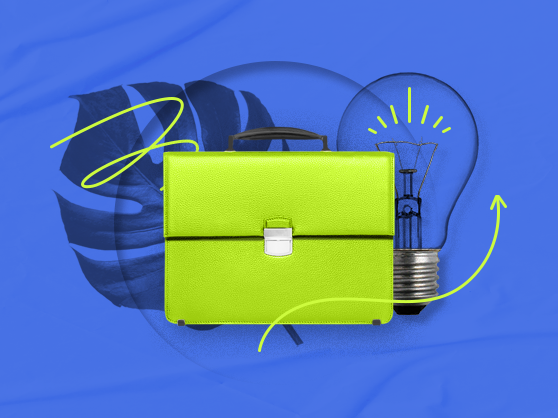Having swung into the second financial quarter of 2019, small businesses across the United States are reaping fruit of their Q1 of hard work. The country’s financial climate is no longer dominated by vague predictions and hopeful start-of-year resolutions but has finally given way to the year’s first solid results.
Meanwhile, several institutions and firms have prepared their own statistics outlining the general U.S. financial climate for small business. From the U.S. Federal Reserve (the Fed) to SMB financing companies such as Guidant Financial, the reports show a favorable even if cautious environment for small business.
Inspired by expert reports, here’s a brief heads-up on the general trends of the small business economy in 2019.
Small business recuperates following government problems
According to the survey by the Federal Reserve, small businesses are more optimistic regarding growth this year than in the past. Nearly three quarters (71%) of surveyed business owners expect growth even amidst top challenges such as lack of capital/cash flow, marketing/advertising, and time-management issues.
The latest Beige Book Report by the Federal Reserve backs the outlook for small businesses in the USA and notes that economic activity has increased in 10 out of 12 Federal Reserve Districts in the months of February-March.
Although the government shutdown hasn’t gone unnoticed for many small businesses – repercussions were evident in retail, tourism, auto sales, real estate, restaurants, and manufacturing sectors — statistics show that small business owners are steadily recuperating from the challenging start of 2019.
What’s more, most business owners aren’t putting blame on the government but are focusing on solving personal challenges.
«“A substantial 53 percent of business owners surveyed ranked their happiness at nine or above [out of 10]. Small business owners aren’t just happy in their roles – they are also confident in the state of small business in today’s political climate. Only 24 percent rated their confidence under five.”»
– Guidant Financial survey
Business owners are more cautious about hiring
The labor market is tightening in many states and that means we’ll be seeing a lot more worker shortages in fields such as information technology, manufacturing, trucking, restaurants, and construction. Experts say this may be why fewer business owners are hiring in 2019, even against an overall favorable U.S. financial climate.
It’s also evident that employers are trying to save up in times of heavier input costs. 41% of small businesses employ only 2-5 employees and in today’s tight labor market, skilled labor is harder to acquire. As costs are growing, the Fed reports that employers are looking into alternative ways to reimburse employees:
«“Contacts in about half of the Districts noted rising non-wage forms of employee compensation, including bonuses, relocation assistance, vacation time, and flexible work arrangements.”»
– Beige Book Report, the Federal Reserve
Business owners surveyed by the Federal Reserve agreed that heavier input costs also account for price increases noted in most states.
U.S. financial climate is influenced by wellness industries and baby boomers
The first quarter of 2019 has shown plenty of positive trends emerging. Amongst these are the rapidly growing small businesses centered on health, beauty, and fitness. Reports attribute the rising demand for wellness products and services to the greater health consciousness of the population.
Together with the business services sector (which continues to top the list) and restaurant industries, the health/beauty/fitness sector constitutes the trio of top development directions for small business in 2019.
As for entrepreneur demographics, over half of small businesses in the U.S. are currently run by owners age 50 and over. While millennials are trying hard to direct their passion into innovative start-ups, baby boomers are warming the U.S. financial climate with their long-standing experience.
SBA financing is regaining public trust
«“I am pleased to announce that Jovita Carranza will be nominated as the new @SBAgov Administrator. She will be replacing Linda McMahon, who has done an outstanding job.”»
– Trump via Twitter
On April 4th, President Trump tweeted his decision to nominate U.S. Treasurer Jovita Carranza to replace resigning SBA Administrator Linda McMahon. During McMahon’s tenure, the Small Business Administration has influenced the U.S. financial climate in positive ways and business owners demonstrated growing levels of trust towards state funding.
The SBA, which provides federal guarantees for small businesses in need of financing and disaster relief loans, gave out over $30 billion in loans in 2018 including over $500 million to women entrepreneurs. Though SBA loans account for only 5% of small business financing, last year they grew by 29% which means the SBA is doing its best to encourage small business owners even in times of ongoing economic challenge.
In 2019, the most popular financing options for small business remain cash, 401(k) business financing, funds from family and friends, and line of credit.
In conclusion
Small business owners constantly face challenges: from bringing their dream to life, to financing it, to helping the world discover and understand their mission. Oftentimes, that just seems like a lifetime of work! So why do people choose to become entrepreneurs in 2019 and what keeps them going in hard times? The answer is simple – just as generations past, today’s small business owners say their greatest inspiration remains the passion for what they’re creating. Whatever surprises the U.S. financial climate may give us in 2019, that’s certainly warming news for the future of small business nationwide.





























